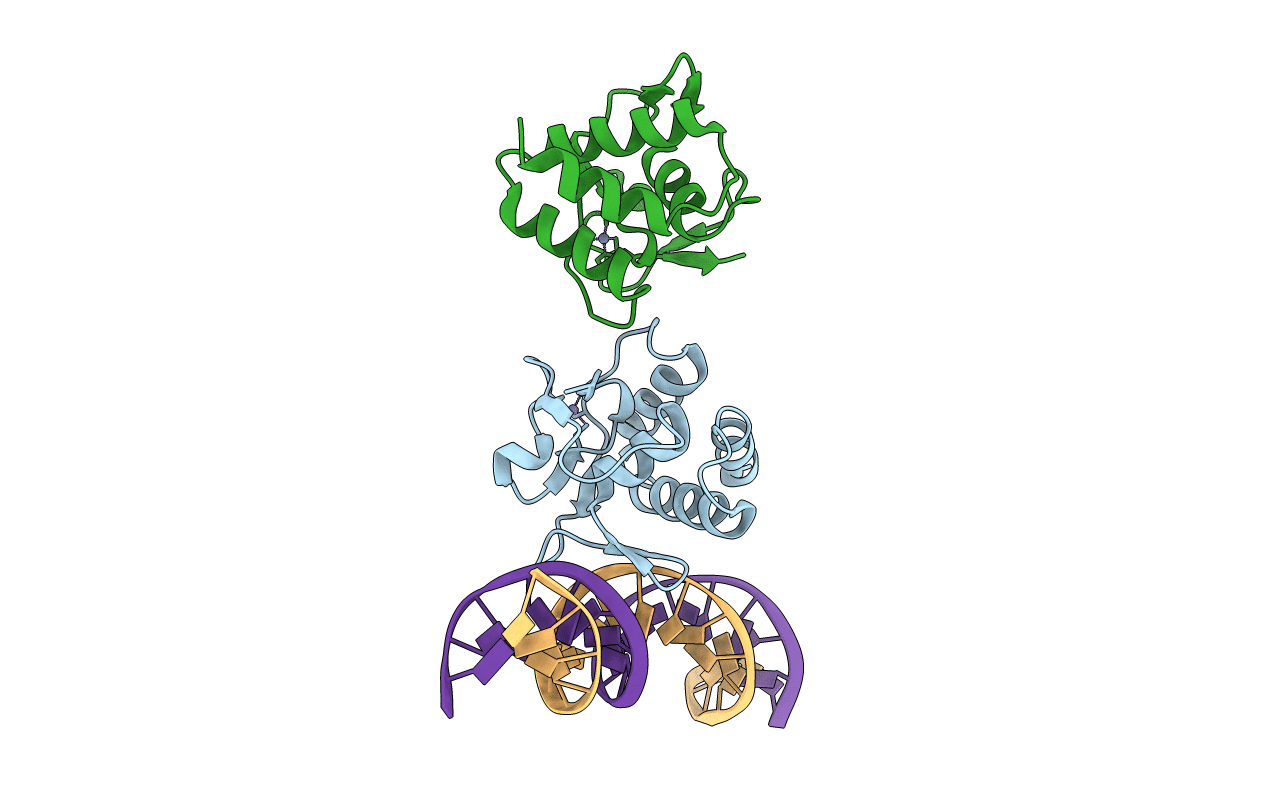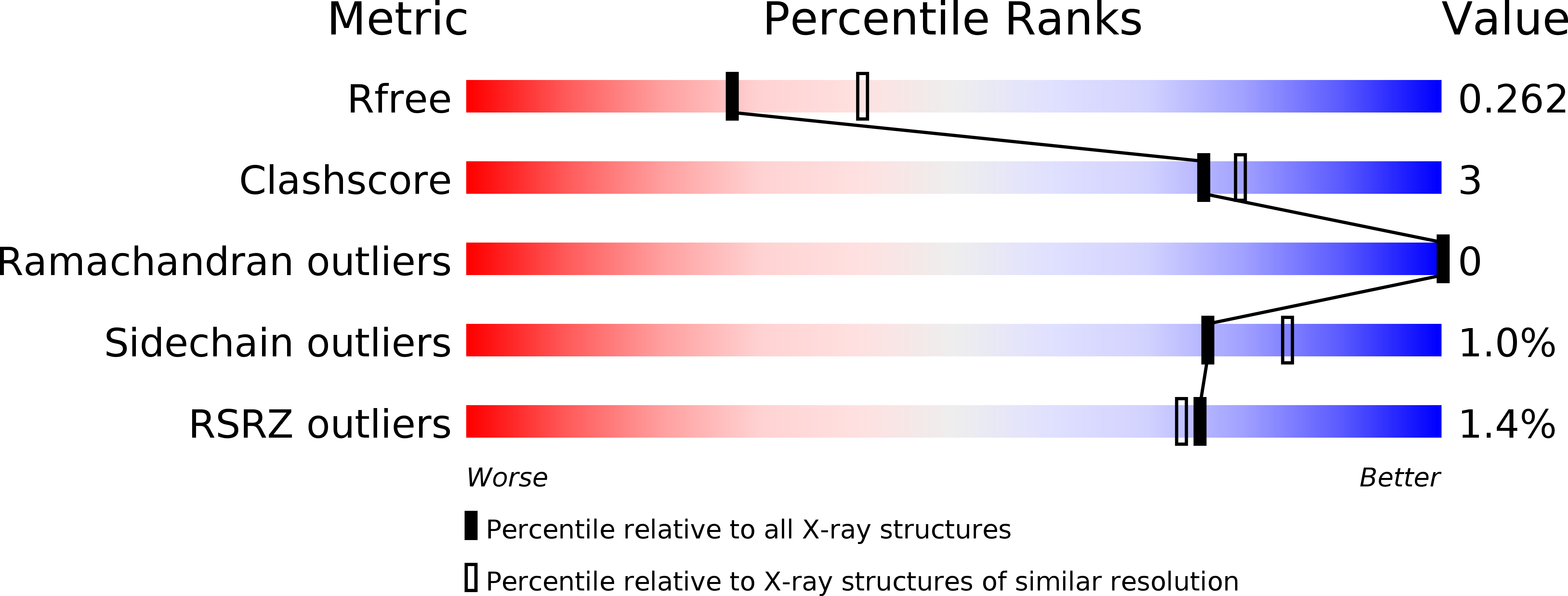
Deposition Date
2017-04-05
Release Date
2017-11-15
Last Version Date
2024-01-17
Entry Detail
PDB ID:
5NM9
Keywords:
Title:
Crystal structure of the placozoa Trichoplax adhaerens Smad4-MH1 bound to the GGCGC site.
Biological Source:
Source Organism:
Trichoplax adhaerens (Taxon ID: 10228)
Homo sapiens (Taxon ID: 9606)
Homo sapiens (Taxon ID: 9606)
Host Organism:
Method Details:
Experimental Method:
Resolution:
2.43 Å
R-Value Free:
0.25
R-Value Work:
0.22
R-Value Observed:
0.22
Space Group:
P 21 21 21


